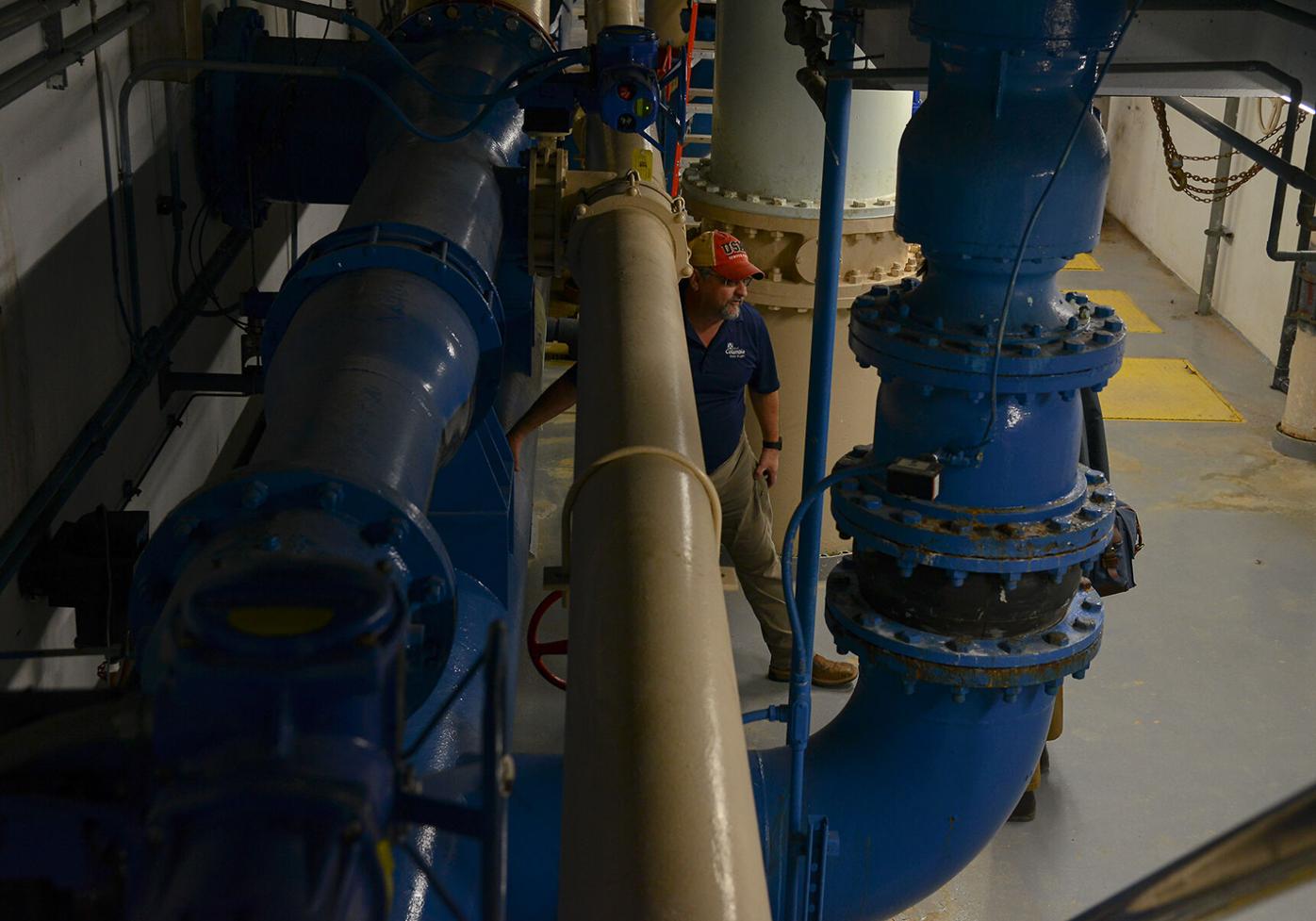All about House Water Treatment
Table of ContentsHouse Water Treatment - QuestionsHouse Water Treatment - TruthsHow House Water Treatment can Save You Time, Stress, and Money.House Water Treatment Fundamentals ExplainedThe House Water Treatment DiariesThe Ultimate Guide To House Water Treatment
A phosphorous substance is included to assist manage corrosion of pipes. This aids stop lead and copper that may be existing in pipes from seeping right into the water. As the water leaves the plant, ammonia is added to alter the chlorine to chloramine, an anti-bacterial that maintains a residual in the circulation system versus bacterial contamination.All chemicals that are added are licensed food grade, risk-free for usage in foods. Dealt with water is saved in deep underground containers and additionally moves by gravity to pumping stations and into the distribution system. The circulation system consists of 1,960 miles of water pipe varying in diameter from 4" to 60".
Elimination of taste and smell substances from the water.: Softens the water.: Filtering to remove tiny particles and sanitation to eliminate infections as well as microorganisms, and make certain an inappropriate setting for virus and also microorganisms development throughout the distribution system.
The Greatest Guide To House Water Treatment

According to the EPA, The Clean Water Act (CWA) establishes the basic structure for controling discharges of contaminants into the waters of the United States and controling high quality requirements for surface waters. Under the CWA, EPA establishes wastewater requirements for sector. The EPA has actually also created national water top quality criteria suggestions for toxins in surface area waters.
Relevant White Papers Select Products Phase Two Screening Removal of grit by streaming the influent over/through a grit chamber. Fine grit that discovers its method right into the influent requirements to be gotten rid of to avoid the damages of pumps and devices downstream (or effect water flow). Too little to be screened out, this grit needs to be gotten rid of from the grit chamber.
About House Water Treatment
Stage Four Aeration Air is pumped right into the aeration tank/basin to motivate conversion of NH3 to NO3 as well as offer oxygen for microorganisms to proceed to propagate and also grow. As soon as converted to NO3, the bacteria remove/strip oxygen molecules from the nitrate particles as well as the nitrogen (N) is offered off as N2 (nitrogen gas) (house water treatment).
This begins in the oygenation tank. The primary feature of the aeration tank is to pump oxygen right into the container to encourage the breakdown of any type of natural product (and also the development of the germs), in addition to make sure there is sufficient time for the natural product to be broken down.
This procedure is managed to offer the ideal conditions for microbial growth. Liquified oxygen surveillance at this phase of the plant is critical. Ammonia as well as nitrate dimensions are common to measure how efficient the germs are in transforming NH3 to N2.
The House Water Treatment Statements
Stage Five Additional Clarifier Dealt with wastewater is pumped right into a secondary clarifier to enable any kind of remaining organic sediment to settle out of treated water circulation. As the influent exits the oygenation process, it flows into a secondary clarifier where, like the key clarifier, any really little go to website solids (or penalties) sink to the base of the container.
Part of this activated sludge is returned to the aeration container to enhance the microbial focus, assistance in propagation, and also increase the break down of natural material. The excess is thrown out. The water that streams from the second clarifier has substantially lowered natural product and ought to be approaching expected effluent requirements.
With the improved focus of microorganisms as part of the aeration phase, there is a demand to evaluate the outward bound effluent for bacteria presence or absence as well as to decontaminate the water. This makes certain that more than specified concentrations of microorganisms are not launched into the setting. Chlorination is the most usual as well as inexpensive kind of sanitation yet ozone as well as UV disinfection are additionally boosting in popularity.
Top Guidelines Of House Water Treatment

After sufficient time, particles comply with each other and also become larger fragments, or, floc, which is vulnerable to settle in water. This procedure of floc formation is called flocculation. To assist in the flocculation of bits, an anionic polymer is added in the mixing area of the cone. Information of water is accomplished by the seperation of suspended solids from water by gravity.
The cleared up water steps upward gradually, eventually passing over the effluent dam to the cone electrical outlet as well as on the to filters for further treatment. The water plant includes a solitary phase lime softening procedure to get rid of solidity. Firmness is triggered by the presence of dissolved bivalent and polyvalent steel ions, predominantly calcium and also magnesium. house water treatment.
Some Known Details About House Water Treatment
This is included both in the clearwell and the high service discharge as water enters the distribution system. Hydrofluosilicic acid gives the resource of fluoride, which is helpful in the avoidance of dental caries in kids. A you can check here fluoride focus of 1. 1-1. 2 mg/l is normally preferable in the plant faucet.